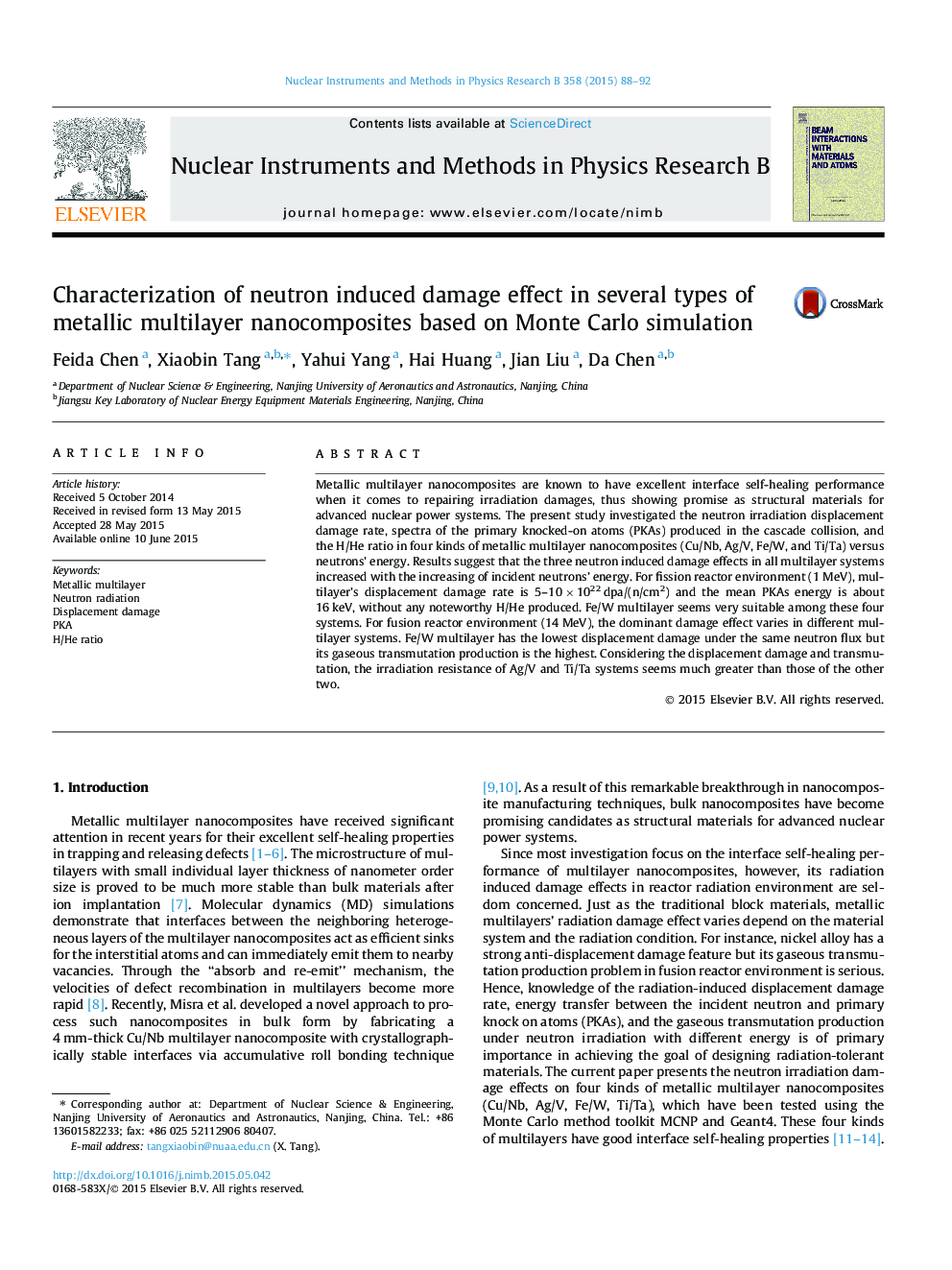| Article ID | Journal | Published Year | Pages | File Type |
|---|---|---|---|---|
| 1682643 | Nuclear Instruments and Methods in Physics Research Section B: Beam Interactions with Materials and Atoms | 2015 | 5 Pages |
Metallic multilayer nanocomposites are known to have excellent interface self-healing performance when it comes to repairing irradiation damages, thus showing promise as structural materials for advanced nuclear power systems. The present study investigated the neutron irradiation displacement damage rate, spectra of the primary knocked-on atoms (PKAs) produced in the cascade collision, and the H/He ratio in four kinds of metallic multilayer nanocomposites (Cu/Nb, Ag/V, Fe/W, and Ti/Ta) versus neutrons’ energy. Results suggest that the three neutron induced damage effects in all multilayer systems increased with the increasing of incident neutrons’ energy. For fission reactor environment (1 MeV), multilayer’s displacement damage rate is 5–10 × 1022 dpa/(n/cm2) and the mean PKAs energy is about 16 keV, without any noteworthy H/He produced. Fe/W multilayer seems very suitable among these four systems. For fusion reactor environment (14 MeV), the dominant damage effect varies in different multilayer systems. Fe/W multilayer has the lowest displacement damage under the same neutron flux but its gaseous transmutation production is the highest. Considering the displacement damage and transmutation, the irradiation resistance of Ag/V and Ti/Ta systems seems much greater than those of the other two.
